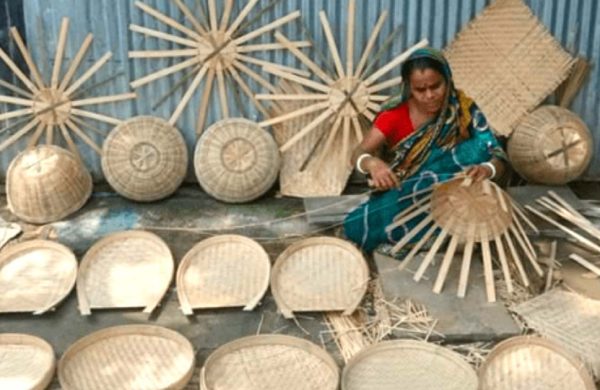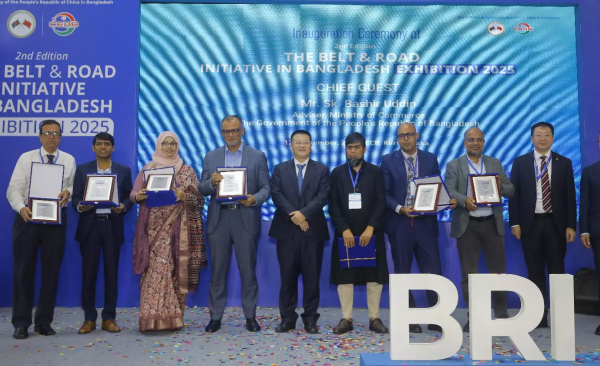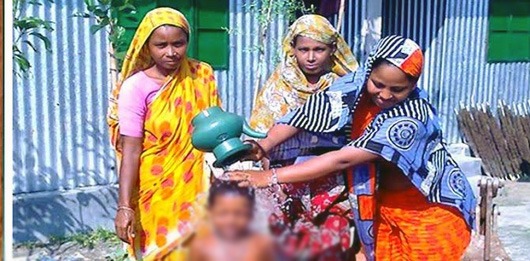SMEs squeezed by rising costs, credit crunch, political chaos
- Update Time : Friday, May 30, 2025

Staff Correspondent:
Bangladesh’s small and medium enterprises (SMEs) – the backbone of its industrial sector – are under mounting pressure as production slows, costs surge, and access to finance remains limited. With only 9% of SMEs able to secure bank credit, the sector is experiencing a significant squeeze, raising concerns over its future viability.
Latest data from the Bangladesh Bank shows that loan disbursement to cottage, micro, small and medium enterprises (CMSMEs) fell by 3.49% year-on-year in the October-December quarter of the 2024-25 fiscal year (FY25).
Stakeholders warn that SMEs are now facing pressures almost as severe as those affecting large-scale industries – putting thousands of businesses and millions of jobs at risk.
“Inflation has pushed up the price of raw materials and transport, while customers are spending less. It’s squeezing profit margins all over the country,” said several SME owners. Many entrepreneurs are now scaling back operations or shutting down altogether.
Saleha Begum Brishti, a Manipuri tat entrepreneur in the apparel sector, shared her struggles saying, “The cost of making each garment has nearly doubled due to higher raw material prices. On top of that, we’ve had to raise wages, which further erodes any profit we might have made.”
STRUCTURAL BARRIERS AND THE NEED FOR CLUSTERS
Experts say that unless structural barriers are urgently addressed, the SME sector could face long-term damage. One potential solution gaining traction is the promotion of cluster-based development – a strategy that groups similar businesses geographically to boost efficiency and innovation.
Dr Mustafa K Mujeri, executive director of the Institute for Inclusive Finance and Development (INM) and former Chief Economist at Bangladesh Bank, stressed the importance of this approach.
“To support SME growth, we need to expand cluster activities,” adding, “Organisations like the SME Foundation, PKSF, and BSCIC are working to improve cluster efficiency and financial access. But their efforts are still far below what’s required.”
Clusters foster collaboration between enterprises, support services, and institutions in the same region. This can lower costs, improve market access, and spark innovation.
However, Mujeri pointed out that despite the promise of cluster models, SMEs continue to face critical hurdles: limited access to credit, poor infrastructure, weak institutional support, and fragmented policy.
CALL FOR A STRONGER FINANCIAL ECOSYSTEM
Prof Mustafizur Rahman, distinguished fellow at the Centre for Policy Dialogue (CPD), echoed these concerns.
“To unlock the real potential of SME clusters, we need a more robust and coordinated financial ecosystem,” he said.
“That means expanding access to affordable credit, promoting cluster-specific financial products, strengthening public-private partnerships, and improving institutional support. Only then can SME clusters drive industrial growth, regional development, and long-term economic resilience.”
A SECTOR TOO BIG TO IGNORE
The significance of the SME sector to Bangladesh’s economy is undeniable. According to the Bangladesh Bureau of Statistics, over 7.8 million CMSMEs make up more than 99% of all industrial establishments, contribute about 32% to GDP, and employ over 25 million people – an astonishing 85% of the industrial workforce.
Yet, financing remains a chronic challenge. As of December 2024, CMSME loans accounted for just 18.4% of total outstanding loans in the banking sector.
Bangladesh Bank data shows only 679,524 CMSME entrepreneurs – out of 7.8 million – had received loans amounting to Tk107,634 crore.
Moreover, while 70% of CMSMEs operate outside Dhaka, a staggering 91% remain outside the formal financial system, despite the efforts of Bangladesh Bank, 62 commercial banks, 35 financial institutions, and over 700 microfinance providers.
CLUSTER-BASED DEVELOPMENT GAINS GROUND
In response, the SME Foundation has ramped up its focus on cluster-based development. Since launching a cluster mapping initiative in 2011, 177 SME clusters have been identified nationwide, comprising around 70,000 enterprises with a combined turnover of Tk30,000 crore and a workforce of 2 million.
These clusters – concentrated in sectors like light engineering, handloom, nakshi kantha, leather goods, handicrafts, and small garments – mostly grew organically, driven by local demand and entrepreneurial spirit rather than government or donor interventions.
Under the National Industrial Policy 2022, a cluster is defined as a 5-km radius area containing at least 50 similar or complementary enterprises.
A recent survey of 380 enterprises found that 79% were micro, 16% small, and just 5% medium-sized – underscoring the urgent need for tailored support for micro and small businesses.
The SME Foundation has assessed development needs in 90 clusters and is actively supporting 40 of them through initiatives in design, product diversification, business management, marketing, online sales, and compliance with VAT and tax regulations.
To date, it has trained 4,800 entrepreneurs across 160 workshops and disbursed Tk185 crore to 2,800 entrepreneurs via its Credit Wholesaling Program in partnership with banks and financial institutions.
“These initiatives include capacity-building training, technology support, infrastructure development, and improving access to finance,” said Md Mushfiqur Rahman, chairperson of the SME Foundation.
“By connecting enterprises with financial institutions, research organisations, and government services, we help tackle key challenges like limited financing, poor technical know-how, and a lack of market linkages.”
However, Mushfiqur acknowledged that the scale of these interventions remains limited compared to the sector’s vast needs.
“We need greater investment, stronger institutional coordination, and more robust policy support if we’re to unlock the full potential of SME clusters and drive inclusive, sustainable growth,” he concluded.

















